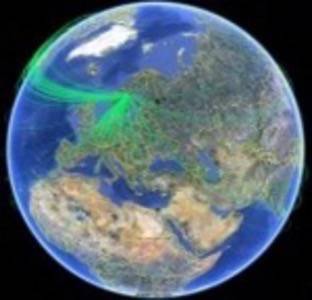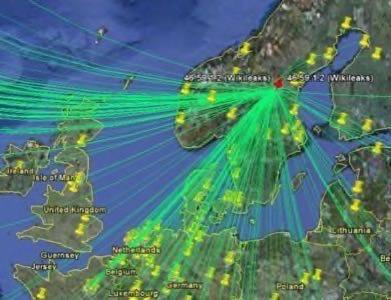
The WikiLeaks saga of the last two weeks has been illustrative, if nothing else, of the importance of the decentralization of the Internet in relation to the freedom of information. An attempt to stifle a voice in one location simply leads to that voice springing from another, like a leak from a rusted pipe or a Whac-A-Mole arcade game.
WikiLeaks currently has well over 1,000 mirrors, which host the same data in different locations in case the parent site is taken down, and one Harvard developer has gathered all of these mirrors into a Google Earth visualization to show from whence these leaks have sprung.

WikiLeaks Coverage From ReadWriteWeb:
- Wikileaks Lets Loose “Global Intelligence Files” from Stratfor Emails
- WikiLeaks May Move Servers to International Waters to Avoid Shutdown
- One Year After Cablegate Began, WikiLeaks’ Operations Still Handicapped
- Twitter, WikiLeaks and the Troubling New Implications For Online Privacy
- Having Ended the Iraq War, Wikileaks Runs Out of Money
- Did Google Hand a Wikileaks Volunteer’s Gmail Data to the U.S. Government? [Updated]
- Weekly Wrap-up: Wikileaks, Google Plus, Facebook and More…
- Wikileaks Takes Down the Head of Al Jazeera
In order to create the visualization, Laurence Muller wrote a PHP script to scrape the primary list of WikiLeaks mirrors on the WikiLeaks site. He found 1,334 URLs and used GeoLite City to resolve each of them to a relatively specific (city-wide) geospatial location. Finally, he converted the list of related URLs, IP addresses and longitude/latitude coordinates into KML format for use with Google Earth. The result is a series of pins on a 3D globe showing all of the locations, globally, where WikiLeaks data is being mirrored.
Taking a quick look at the data, you can see that many of the mirrors are located throughout Europe, though they can be found as far and wide as South America, North America, Asia and Africa. They are all over the globe.
Earlier this week, Marshall Kirkpatrick took a similar look at how WikiLeaks’ data spread though decentralized, peer-to-peer networks, such as on the bittorrent site The Pirate Bay. He came up with a great bunch of stats that show just how difficult it can be to stifle the spread of information with tools like bittorent and dedicated mirror sites. This same sort of map for bittorent seeds would likely show an even greater global distribution.
If you have installed the Google Earth Plug-In you can take a look for yourself at the mapped out data. And if you’re even more of a geo-location geek, Muller has made the data available for download on his blog.

















